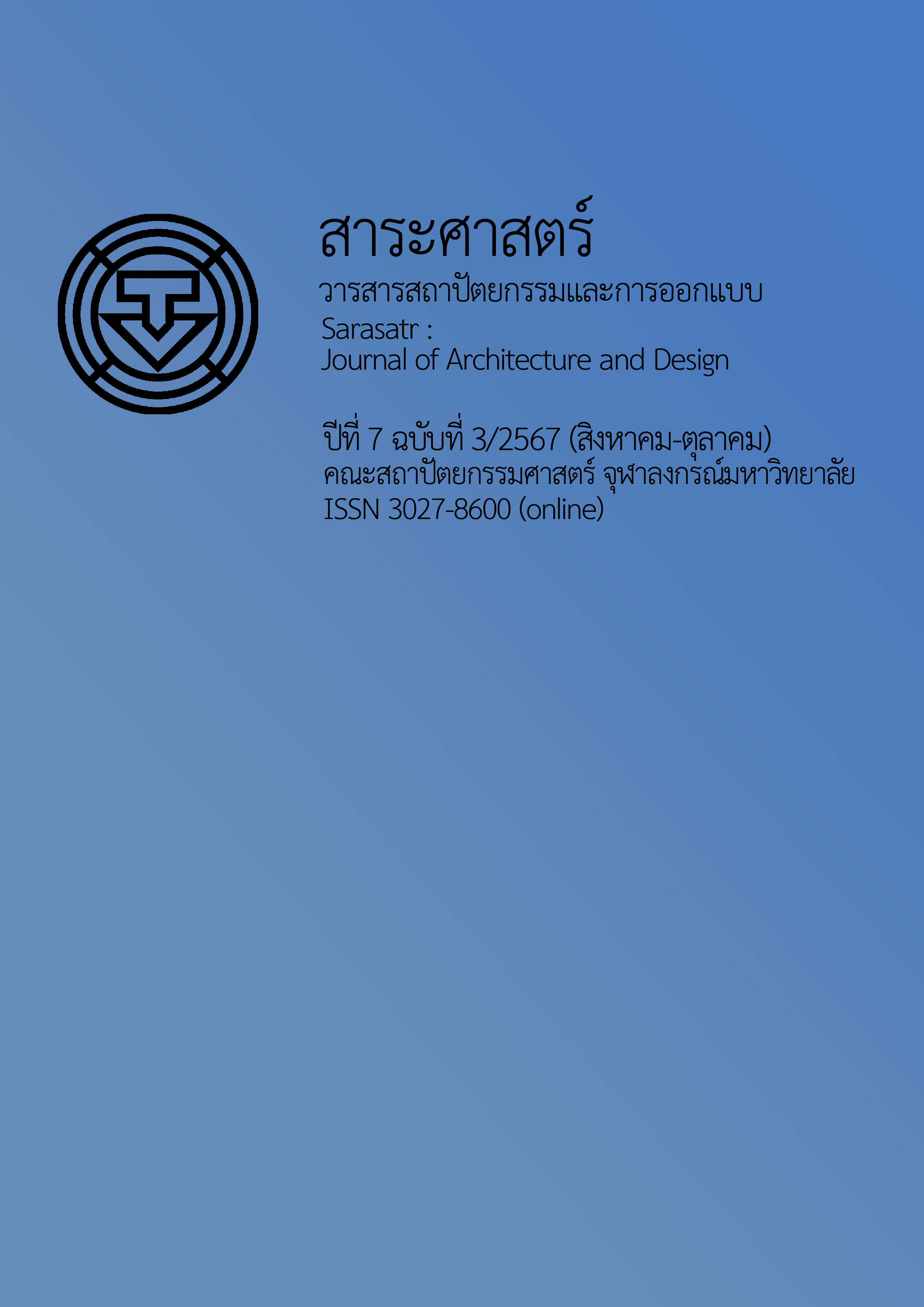Evaluation of Funding Sources Efficiency for Small-scale Real Estate Developers in the Bangkok Metropolitan Area
Main Article Content
Abstract
The economy of Thailand is significantly driven by small and medium-sized enterprises (SMEs), particularly in the real estate sector. This study explores the resilience and adaptability of SMEs in challenging economic scenarios, such as the global financial uncertainty following the COVID-19 pandemic. It focuses on the financial management and planning capabilities crucial for the survival of these businesses, especially in terms of capital management. The research encompasses a sample of 508 small real estate companies, analyzing their financial statements from 2018 to 2022.
Findings indicate that 1) the majority (72%) of small companies in Bangkok and its vicinity earned less than 11 million baht in 2022, 2) the average registered capital remained stable at about 90 million baht per company in 2022, 3) small real estate firms have been experiencing operational challenges with increasing cumulative losses from 2018, peaking between 2020 and 2022, 4) the average debt of these companies was around 94 million baht per company in 2022, showing an upward trend, 5) in 2022, small real estate companies predominantly opted for debt financing over equity, 6) total revenues have trended downwards since the onset of the COVID-19 crisis, averaging 10 million baht per company in 2022 and 7) there has been a decreasing trend in net losses since 2021.
The study revealed that small real estate companies are likely to maintain their operational capital levels; if previous years were unprofitable, they might increase their capital the following year and vice versa. Debt was the primary source of financing adjusted first. Additionally, the research recommends that entrepreneurs utilize both equity and debt financing to maximize the benefits of each. It is crucial to sequence the use of these financing sources appropriately according to the company’s revenue. Initially, companies should opt for equity financing to avoid interest burdens. Subsequently, they can leverage debt financing to spur growth once they have sufficient revenue to cover potential interest expenses. This research can aid entrepreneurs in planning and selecting financing sources and inform financial institutions and governmental bodies about how to better support and develop SME efficiency.
Article Details
References
กฤษฎา เสกตระกูล. (2556). Financial statement analysis - การวิเคราะห์งบการเงิน. ศูนย์ส่งเสริมการพัฒนาความรู้ตลาดทุน ตลาดหลักทรัพย์แห่งประเทศไทย. https://weblink.set.or.th/dat/vdoArticle/attachFile/AttachFile_1472551305959.pdf
กรมพัฒนาธุรกิจการค้า. (2556). คู่มือการจัดประเภทธุรกิจของนิติบุคคล. http://www.dbd.go.th/download/PDF_/book_business_man.pdf
กรมพัฒนาธุรกิจการค้า. (2566). ภาพรวมธุรกิจ – หลักเกณฑ์การจัดกลุ่มขนาดธุรกิจ. https://datawarehouse.dbd.go.th/biztype/overview
ณัชชา แจ่มนุช. (2559). ประสิทธิภาพการดำเนินงานทางการเงินของบริษัทอสังหาริมทรัพย์ขนาดเล็กและขนาดกลางที่จดทะเบียนในเขตกรุงเทพมหานคร [วิทยานิพนธ์ปริญญามหาบัณฑิต ไม่ได้ตีพิมพ์]. จุฬาลงกรณ์มหาวิทยาลัย.
รุจิรา ชิณสุข. (2553). การวิเคราะห์โครงสร้างเงินทุนของบริษัทจดทะเบียนกลุ่มอสังหาริมทรัพย์และก่อสร้างในตลาดหลักทรัพย์แห่งประเทศไทย [วิทยานิพนธ์ปริญญามหาบัณฑิต ไม่ได้ตีพิมพ์]. มหาวิทยาลัยสุโขทัยธรรมาธิราช.
วรเดช สุฤชุกุล. (2558). แหล่งเงินทุนเพื่อพัฒนาโครงการอสังหาริมทรัพย์ช่วงก่อนและหลังเข้าจดทะเบียนในตลาดหลักทรัพย์แห่งประเทศไทยของบริษัทพัฒนาอสังหาริมทรัพย์ที่เข้าจดทะเบียนหลังปี พ.ศ. 2540 [วิทยานิพนธ์ปริญญามหาบัณฑิต ไม่ได้ตีพิมพ์]. จุฬาลงกรณ์มหาวิทยาลัย.
สำนักงานส่งเสริมวิสาหกิจขนาดกลางและขนาดย่อม. (2566). รายงานสถานการณ์ mSME ปี 2566. https://bds.sme.go.th/Files/f5e20d92-138e-48f2-a29f-5a6c3a37cfd0.pdf
สุธาสินี สุวรรณวลัยกร. (2564). กลยุทธ์การดำเนินธุรกิจของบริษัทอสังหาริมทรัพย์ขนาดเล็กที่พัฒนาโครงการที่อยู่อาศัยแนวราบในเขตกรุงเทพมหานคร [วิทยานิพนธ์ปริญญามหาบัณฑิต ไม่ได้ตีพิมพ์]. จุฬาลงกรณ์มหาวิทยาลัย.
หทัยกาญจน์ ไชยวงค์. (2562). ความสัมพันธ์ระหว่างความรู้ความเข้าใจเกี่ยวกับการจัดทำบัญชีและงบการเงินกับการเข้าถึงแหล่งเงินทุนของผู้ประกอบการวิสาหกิจขนาดกลางและขนาดย่อม ในพื้นที่ 5 จังหวัดภาคใต้ชายแดน [วิทยานิพนธ์ปริญญามหาบัณฑิต ไม่ได้ตีพิมพ์]. มหาวิทยาลัยสงขลานครินทร์.
อรรถวุฒิ เลาหภักดี. (2551). การจัดโครงสร้างเงินทุนภายใต้กรอบนโยบายการเงินของบริษัทจดทะเบียนในตลาดหลักทรัพย์แห่งประเทศไทย [วิทยานิพนธ์ปริญญาดุษฎีบัณฑิต ไม่ได้ตีพิมพ์]. สถาบันบัณฑิตพัฒนบริหารศาสตร์.


